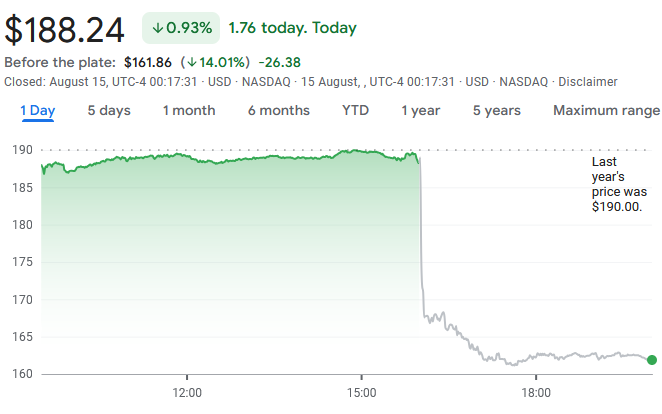Applied Materials Q4 Outlook Dragged by China Demand Slump, Shares Plunge 14% After Hours

TradingKey - On August 14, U.S. chip equipment leader Applied Materials delivered disappointing sales and profit forecasts, revealing the ripple effects of U.S.-China trade tensions across the global semiconductor supply chain.
The company projected revenue of approximately $6.7 billion for its fiscal Q4 ending October, significantly below the analyst consensus estimate of $7.32 billion. Adjusted earnings per share excluding certain items are expected at $2.11, trailing the $2.38 forecast.
Following the weak outlook, Applied Materials shares plunged more than 14% in after-hours trading.

Source: Google Finance
CEO Gary Dickerson explicitly stated the company is facing reduced demand from Chinese customers. As one of the world’s largest semiconductor consumption and manufacturing markets, China has long been a critical revenue source for Applied Materials, accounting for 35% of total sales in the recently concluded July quarter (fiscal Q3). Current low procurement intent from Chinese clients has directly triggered a sharp order decline, impacting performance expectations.
Escalating U.S. export restrictions on advanced semiconductor manufacturing equipment to China continue to limit Applied Materials’ ability to sell cutting-edge process tools to Chinese clients, affecting its high-growth business in the region.
Additionally, prolonged tariff negotiations and macroeconomic concerns have prompted major customers, including China to defer wafer fab expansion plans, entering a "capacity digestion phase" instead.
"Many peers have shown surprising China strength and given expectations for a decent pullback, but Applied Materials' results show much more volatility," said Brooks Idlet, senior analyst at CFRA Research.
Beyond China factors, CFO Brice Hill elaborated that "non-linear demand from leading-edge customers"—where a handful of top chipmakers reduce short-term procurement due to heightened market concentration and capacity expansion rhythm adjustments—further amplified revenue fluctuations.







